
2022 SURP PROJECTS
2022 SURP PROJECTS
Multiple lines of enquiry into high-redshift: simulating line-intensity cross-correlations *
This project will be supervised by Dongwoo Chung, CITA/Dunlap Fellow.
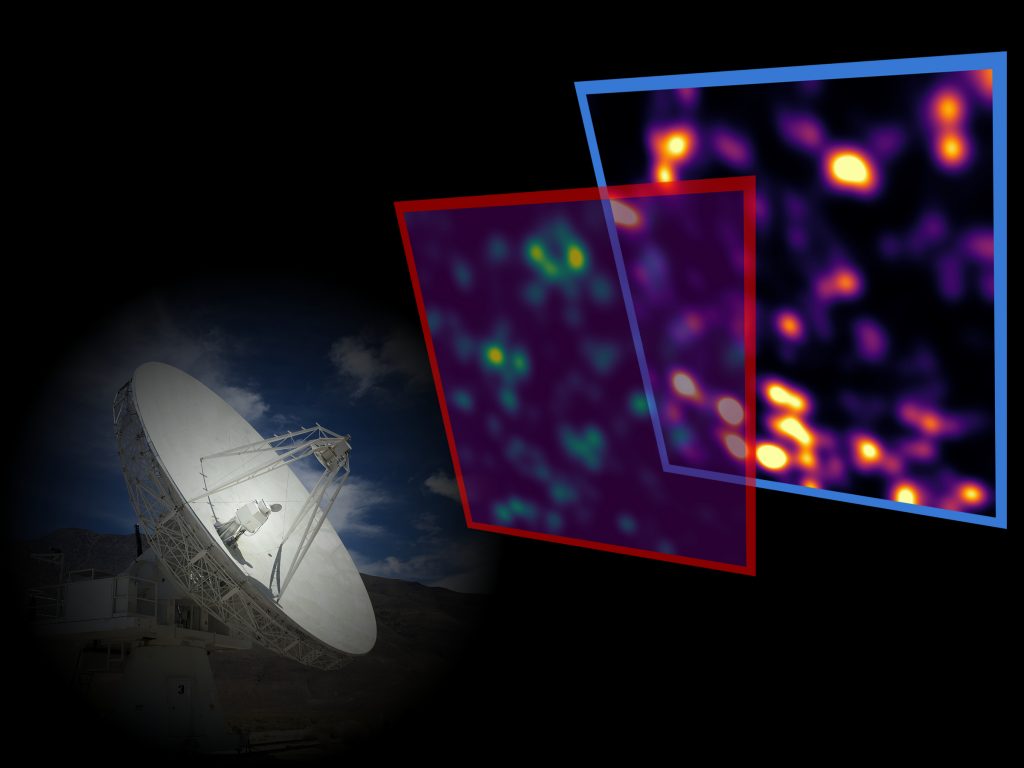
Studying Fast Radio Bursts with CHIME
The Canadian Hydrogen Intensity Mapping Experiment (CHIME) is a revolutionary new radio telescope, located outside Penticton, BC. In its first three years of operation, CHIME has discovered hundreds of new Fast Radio Bursts (FRBs), and this discovery rate is expected to keep course if not further increase. We are currently in the process of constructing three ‘Outrigger’ telescopes across the continent to drastically improve the sky localization capabilities of CHIME/FRB and enable the association of the FRBs we detect with their host galaxies. CHIME has brought about a new landscape in the FRB field; for the first time we are able to study FRB as a population. In order to do that, all these interesting detections will need to be systematically followed up, verified and characterized in an automated manner.
There are many opportunities and potential projects using CHIME/FRB data, including software and signal processing pipelines, data analysis and visualization, as well as transient astrophysics. The project can be adjusted to fit the interest and skill set of the applicant. As part of CHIME/FRB, students will also experience collaborative research environment through weekly interactions with members from other institutions. The student will have opportunities to develop skills in radio signal processing, Python programming, statistics, simulations, and machine learning.
This project will be supervised by Paul Scholz, Dunlap Fellow, and Ziggy Pleunis, Dunlap Fellow.
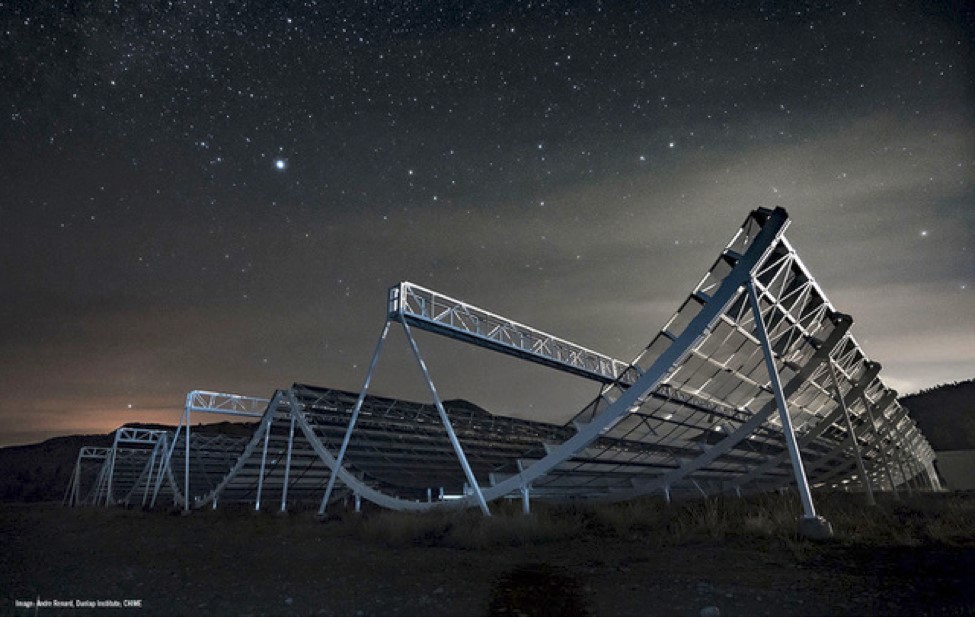
Exploring the magnetic universe with radio polarimetry
Magnetic fields are present throughout the universe, including the interstellar medium in galaxies. One of our best tools for studying ISM magnetism is radio polarization, particularly the Faraday rotation effect which causes the polarization of radio emission to be modified by the magnetic field. Radio polarization and Faraday rotation surveys provide a valuable resource for studies of magnetic fields in the Milky Way and other galaxies. Large radio surveys are about to dramatically increase the amount of Faraday rotation data we have, from the few tens of thousands of measurements we have now to over a million, dramatically increasing what we can learn scientifically from these measurements. There’s a lot to see and do in the data we already have, and there’s new data coming in all the time, so there’s a lot we can do to learn more about interstellar magnetic fields.
This project will be supervised by Cameron Van Eck, Dunlap Research Associate.
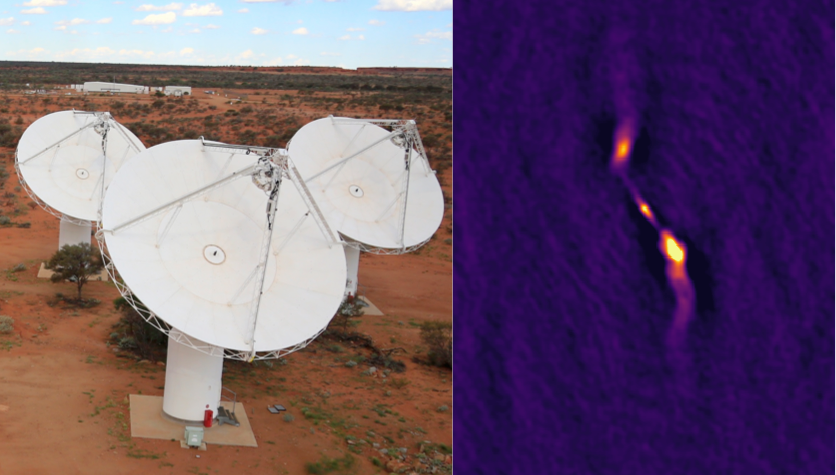
Multiple lines of enquiry at high redshift: simulating line-intensity mapping surveys *
Line-intensity mapping (LIM) surveys in the next decade will produce observations of fluctuations in integrated line intensity across large cosmological volumes, targeting various radio and sub-millimetre lines that all trace matter and galaxies in different ways. Each LIM observation will have its particular set of challenges in the form of foregrounds and systematics. While significant, these challenges may be surmountable in analysis, including through cross-correlation the measurement against conventional galaxy surveys or even LIM observations targeting a different line. The student will explore potential techniques in this vein in simulated LIM surveys, building on existing simulation frameworks, with an eye on viability of such analyses for ongoing or future real-world LIM observations. The student will gain skills related to analysis of numerical simulations, as well as understanding of high-redshift astrophysics and cosmology. Given the wide range of possibilities, details will change to match the student’s exact interests.
This project will be supervised by Dongwoo Chung, CITA/Dunlap Fellow.

Machine learning the visible counterparts to gravitational wave events
The recent detection of gravitational waves (GWs) was a stunning confirmation of Einstein’s general theory of relativity; the first co-detection of electromagnetic radiation can shed light on the nature of the catastrophic events that spawn GWs and improve our understanding of the expansion of the Universe. This means simulating “kilonova” light-curves and carefully fitting them to data. But, these simulations are prohibitively computationally expensive. In this project, the student researcher will make use of a machine learning (ML) alternative to make the analysis possible. Depending on the interests of the student, they can (i) improve the ML algorithm (Gaussian process, neural networks); (ii) make forecasts for the constraining power of future observations; (iii) use the method to analyse current light-curve observations; or any combination of the above.
This project will be supervised by Keir Rogers, Dunlap Fellow.
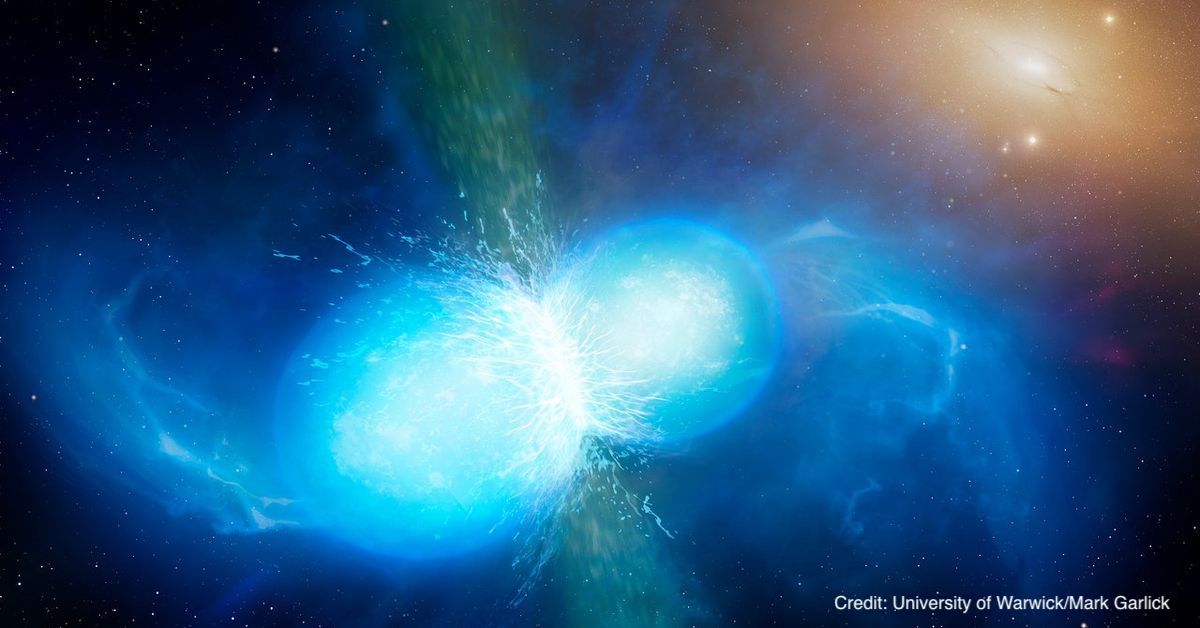
Population Study of Double White Dwarfs
We would use the most recent GAIA data to model the number of double white dwarfs in the solar neighbourhood. Given our knowledge of binary main-sequence stars, are there enough double white dwarfs? And white-dwarf-main-sequence binaries? Is there evidence for binary inspiral/merger during the evolution?
This project will be supervised by Prof. Yanqin Wu, DADDAA.
Probing the Properties of Stellar Streams with Bayesian Statistics
Stellar systems such as dwarf galaxies and globular clusters can be disrupted to form stellar streams in our Milky Way, providing a snapshot of accretion that can be compared directly with theoretical models of structure formation. Thanks to the spectroscopy from Southern Stellar Stream Spectroscopic Survey (S5), proper motion from Gaia, and precise photometry from various modern surveys, we now have both the kinematic and chemical information of over a dozen stellar streams (see Figure). The student will develop a statistical model to assess the membership of each stream candidates with full 6D+metallicity information and assess how the model might affect the underlying kinematic and metallicity properties of the streams. This project will explore developing and applying new statistical and computational techniques which will be largely used in the next generation spectroscopic surveys such as DESI, 4MOST, WEAVE, etc.
This project will be supervised by Prof. Ting Li, DADDAA, and Josh Speagle, Dunlap Fellow.
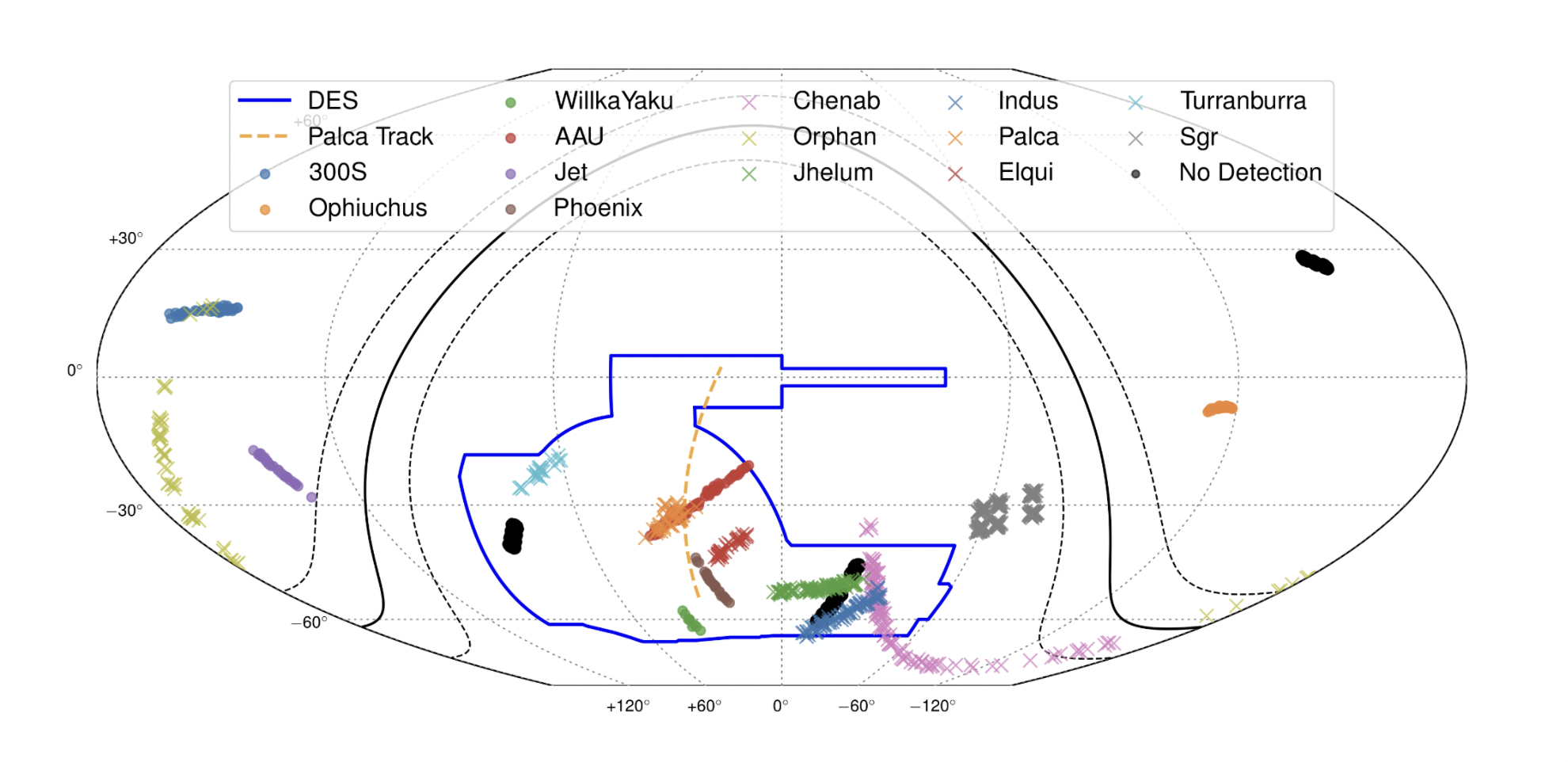
Dwarf galaxies under tidal stripping: Bootes III, Antlia 2 and Crater 2
While over 70 satellites galaxies have been discovered in the Milky Way, only a handful of them appear to be on orbits whose pericenters are near enough to the Milky Way for them to have experienced significant tidal disturbance. The Southern Stellar Stream Spectroscopic Survey (S5) has collected extensive spectroscopic data on three of such systems. These three systems all show extremely large size and low surface brightness (see Figure). The student will perform kinematic, metallicity and orbital analysis on these three galaxies using data from S5 and Gaia EDR3, to understand their formation and evolution. (Image Credit: Vasily Belokurov)
This project will be supervised by Prof. Ting Li, DADDAA.
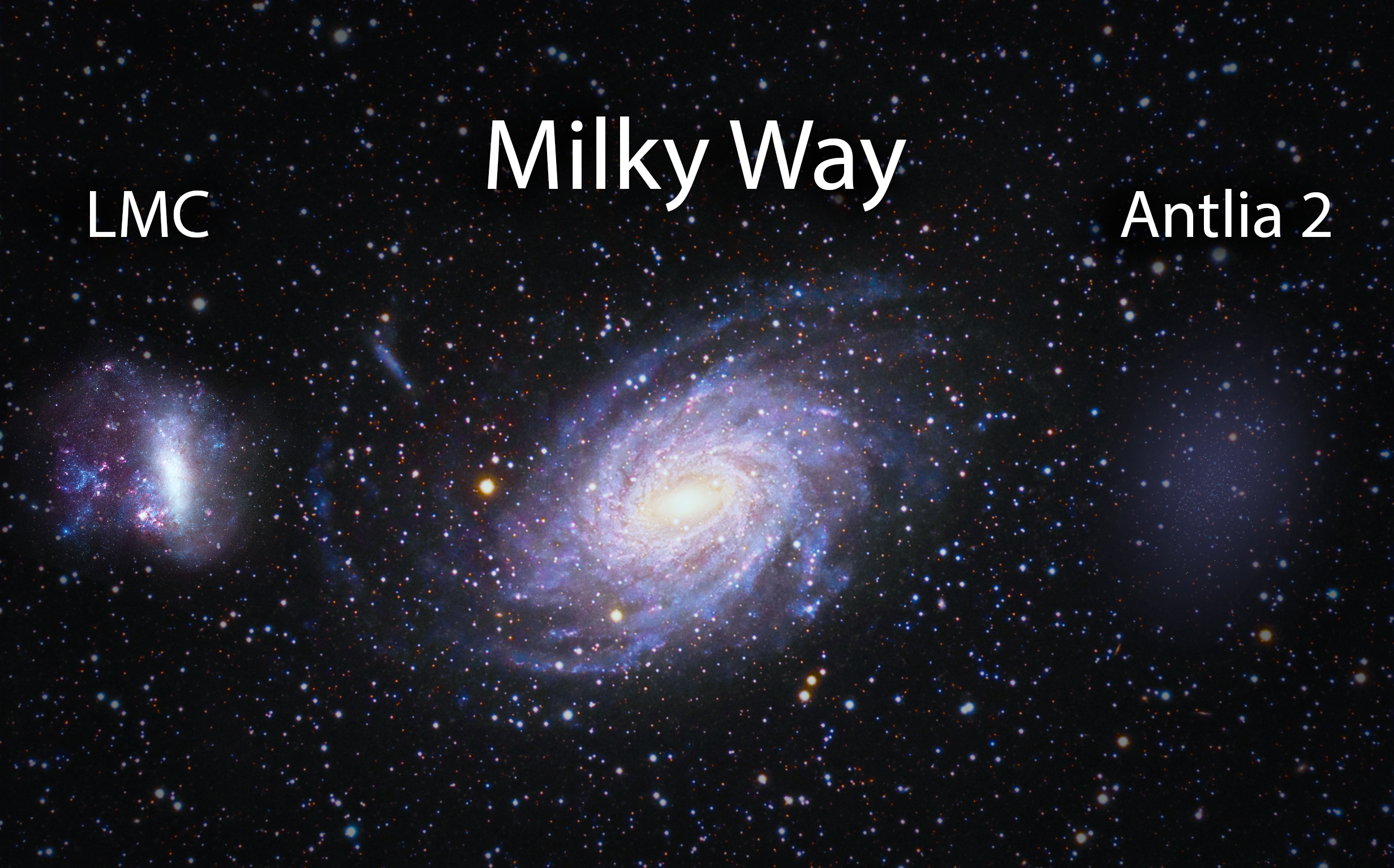
Probing the Milky Way with Blue Horizontal Branch Stars
Blue horizontal branch stars (BHBs) are great distant tracers as they are bright and can probe the Milky Way up to its virial radius or even further. While BHB stars are similar to blue straggler stars (BSs) in color space (-0.3<g-r<0), the high-precision photometry data from DECam show separate sequences in g-r vs i-z color (see right panel of the Figure). The student will work on two parts via this SURP program: (1) develop an empirical relation between the absolute magnitude and color of BHBs using DECam photometry; (2) develop a statistical model for the probability of a star being a BHB or BS star given its griz photometry from DECam (including the photometric uncertainty). Together, the two parts of this SURP project will create one of the largest samples of BHB stars to probe the Milky Way halo density profile down to r~23 mag (corresponding to a heliocentric distance > 300 kpc).
If you are interested in this project, you may also consider applying this SUDS project: “Mapping the Milky Way a Million Light Years Away” at https://datasciences.utoronto.ca/suds-students/
This project will be supervised by Ting Li, DADDAA, Prof. Gwendolyn Eadie, DADDAA, and Josh Speagle, Dunlap Fellow.
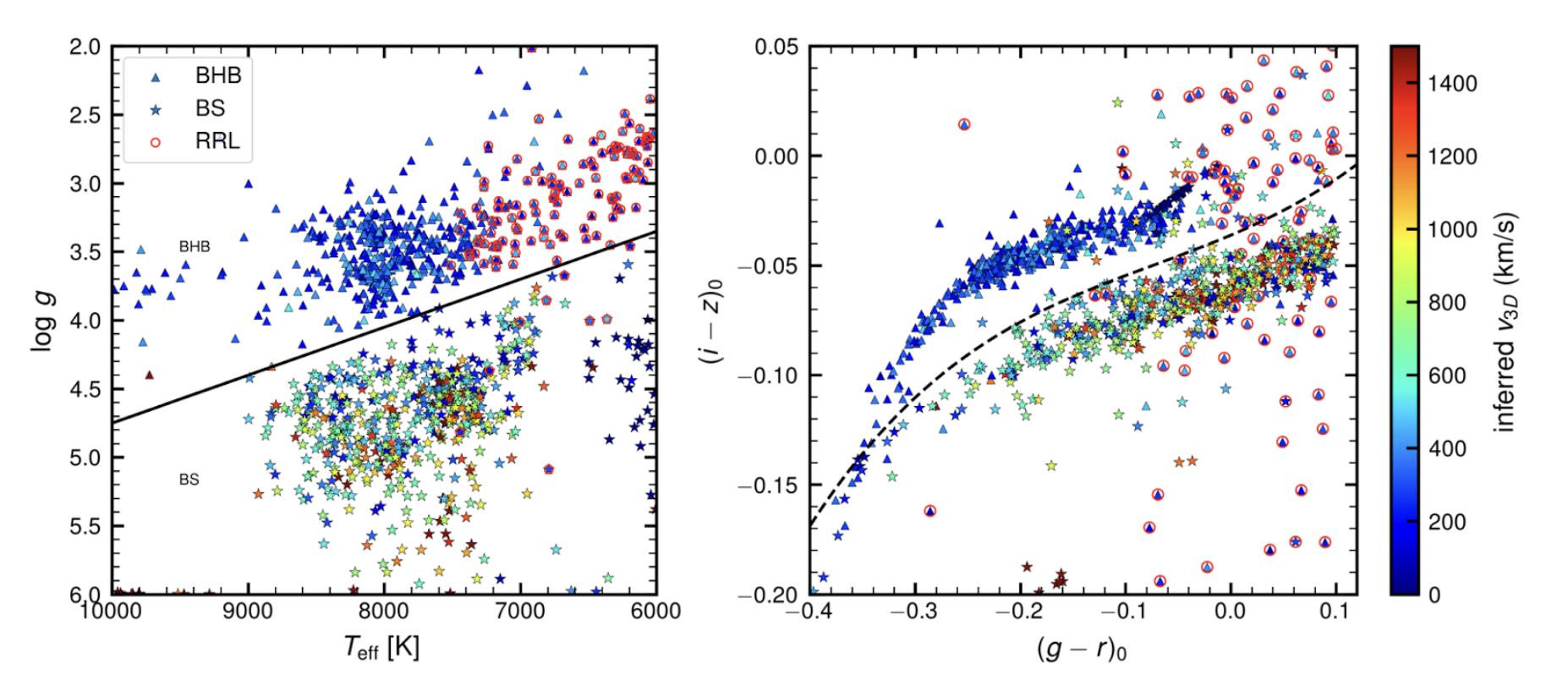
Disk galaxies present an immense regularity in their radial structures: they obey many scaling relations and they have similar surface brightness profiles. But their various and different evolutionary histories may leave imprints in the details of their outer vertical structure, which is sensitive to perturbations and has a longer dynamical timescale. In particular, some disk galaxies have been observed to “flare”, which means that the scale-heights (i.e. puffiness) of their disks increases further away from their centers. Is it also the case of the Milky Way? (Image Credit: Feast et al. 2014) To address the above question requires an extensive knowledge of the Galaxy’s geometry: (1) Where is the midplane of the Milky Way? (2) What is the local vertical structure of stars, and how does the vertical structure change as a function of Galactocentric radius? The student will first develop a method to determine the position of the midplane of the Galactic disk around the Sun, using statistics and newly obtained data from SDSS and/or Gaia. This project offers a range of working styles, including some pen-and-paper work, coding (e.g. Python), handling of new data and utilizing existing tools.
This project will be supervised by Neige Frankel, CITA Fellow, Ted Mackereth, CITA/Dunlap Fellow, Josh Speagle, Dunlap Fellow.
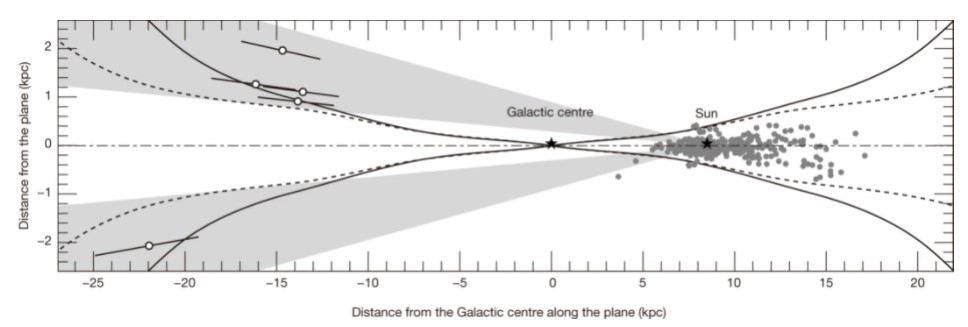
Uncovering the structure of the Milky Way through its dusty haze
What drove disk galaxies to their present-day state? Our Milky Way is an ideal laboratory to study how galaxies evolve: it is a typical disk galaxy, but, as opposed to external galaxies, we are sitting inside its disk and have collected extensive star-by-star information for its stellar disk (with Gaia, SDSS, and many other surveys!). However, it is difficult to use this information in order to accurately characterize the present state of the Milky Way because interstellar dust blocks starlight from reaching us. This project will seek to characterize the 3D structure of the local stellar disk as from the soon-to-be-released Gaia DR3 data. It will consist of four parts: Constructing a data sample that is suitable for statistical inference Building a realistic model for the Milky Way disk’s structure Selecting existing maps of dust extinction in the Milky Way and understanding their limitations Constraining the 3D structure of the Milky Way disk using the data from (1) and the models from (2) and (3) based on the methods outlined in Bovy et al. (2016). The project will require the application of spherical harmonics and Fourier transforms to new and large scale data sets. The student will be applying both pen-and-paper work and code (Python would be useful, but not required!) to develop new tools to analyze data from the Gaia survey. (Image Credit: Green et al. 2019)
This project will be supervised by Josh Speagle, Dunlap Fellow, Neige Frankel, CITA Fellow, Ted Mackereth, CITA/Dunlap Fellow.
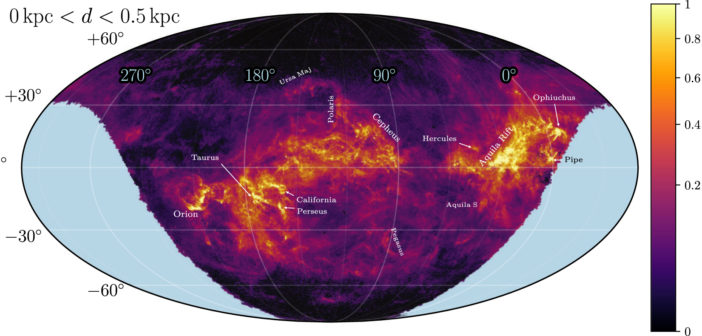
Modelling globular clusters with machine learning
Globular clusters (GCs) are huge groups of old stars that serve not only as a fossil record of how stars formed but also as a probes of the Milky Way Galaxy today. Connecting observations of GCs to broader science questions in stellar and Galactic evolution requires accurate models of each GC’s 3-D distribution of the positions and velocities of the stars. Given the observational data available for Galactic globular clusters, sophisticated statistical tools are required in order to develop such models. This project will focus on using machine learning techniques such as normalizing flows to try and develop a smooth and differentiable “emulator” of GC models based on theoretical and numerical simulations, with the goal of using the results to model GCs observed with the Gaia space satellite.(Image Credit: de Boer et al. 2019)
This project will be supervised by Josh Speagle, Dunlap Fellow, Prof. Gwendolyn Eadie, DADDAA, and Prof. Jeremy Webb, DADDAA.
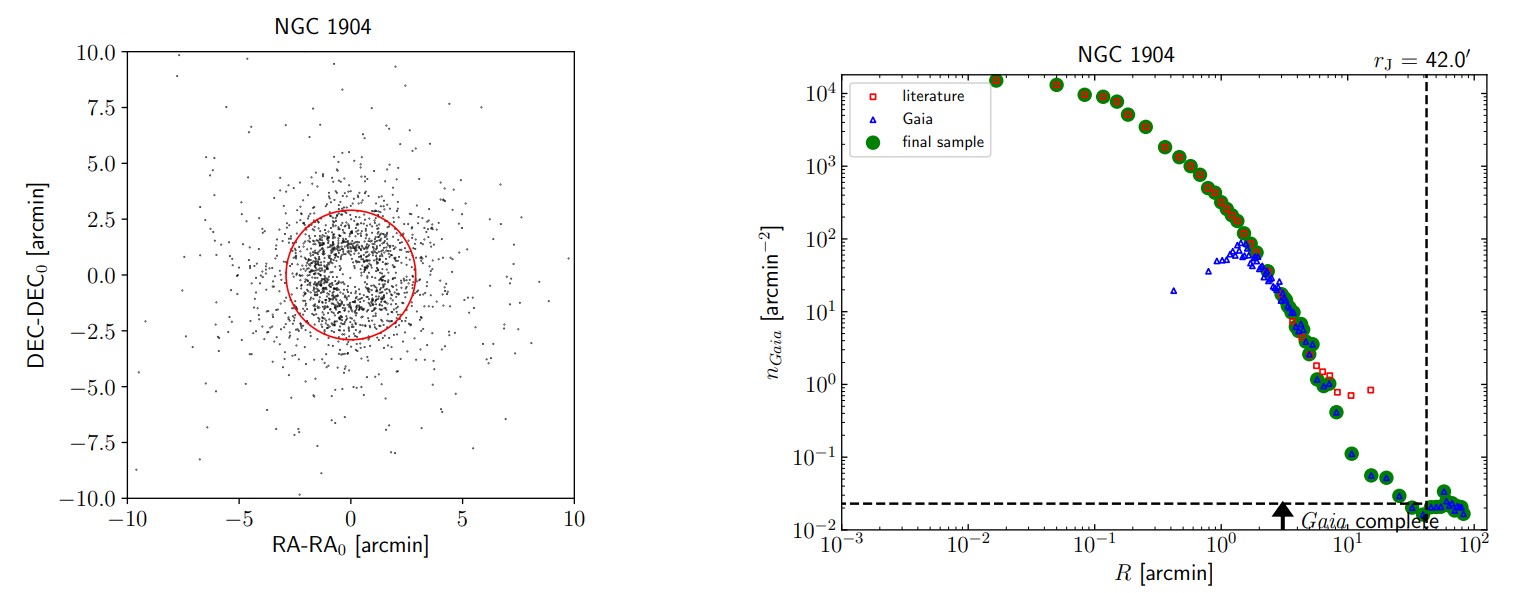
Estimating Photometric Metallicities from Theory and Data
The chemical composition (“metallicity”) of stars serve as a record of the conditions of the gas from which they formed. While the present-day positions of many stars have migrated a lot from the places where the were born due to the messy, disruptive nature of how our Milky Way Galaxy has evolved, their metallicity serves as a unique window back in time that can give us insights into how these processes behave. While metallicities have traditionally been derived from high-resolution spectroscopy, more recently machine learning techniques have enabled estimates to be derived from photometry (i.e. images) alone. This project will focus on trying to see how these new data-driven results compare to theoretical models to improve our understanding of the physics of how stars evolve. Through this project, the student will learn about various stellar evolutionary models and their assumptions, how to use them to produce synthetic photometry, investigate how this photometry changes as a function of metallicity, and apply statistical tools to compare the results with observations from the S5 survey. (Image Credit: Li et al. 2019)
This project will be supervised by Josh Speagle, Dunlap Fellow, and Prof. Ting Li, DADDAA.
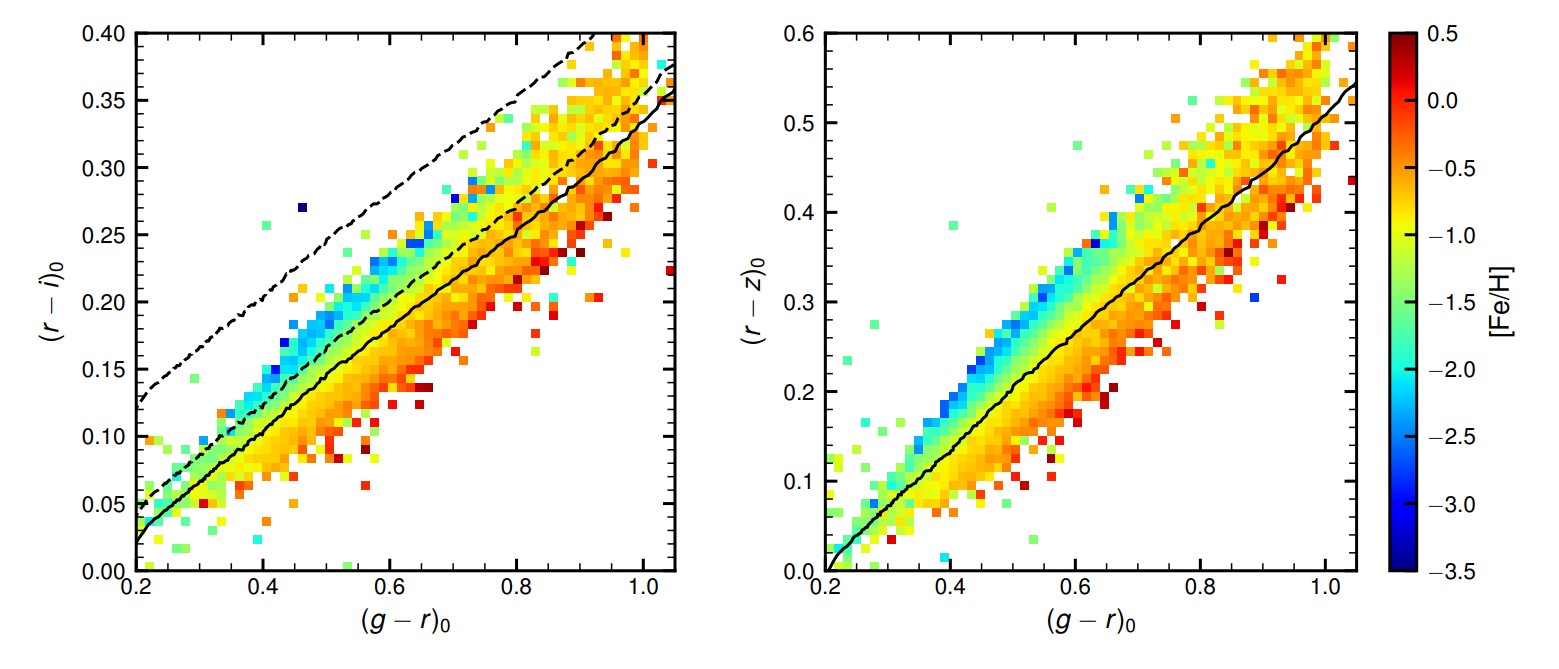
Building Next Generation Cosmology Telescopes in Software
Upcoming cosmology experiments require lots of innovative software to coordinate observations, manage data collection and process and understand the data. The Simons Observatory (SO) will be a multi-telescope observatory in Chile for creating large and very sensitive maps of the cosmic microwave background to probe for inflation, measure the total mass of the three neutrino species, study the growth of structure, and much more. The Hydrogen Intensity and Real-Time Analysis eXperiment (HIRAX) will be an array of 1024 six-metre radio dishes in South Africa that will use intensity mapping to make huge, 3D maps of the universe between z = 0.8 and 2.5 in order to study dark energy and characterise pulsars and fast radio bursts (FRB’s). SO is under construction and HIRAX will start being deployed in 2022. There are various opportunities for summer research to contribute to the development of software for collecting, processing and understanding the data on either one of these experiments. The project can be tailored based on the applicant’s interests coupled with the needs of the experiment and will involve coding, typically in python and perhaps C++. Programming experience is helpful, but the position also offers the opportunity to develop these software skills, which are increasingly important for astrophysics research. More information on SO and HIRAX is linked from my webpage: https://www.astro.utoronto.ca/~ahincks/
This project will be supervised by Prof. Adam Hincks, DADDAA.

Left: Artist’s impression of HIRAX (Image: HIRAX, Fig. 2 of Crichton et al. 2021). Right: Cutaway design of the large aperture telescope for the Simons Observatory; the primary mirror is 6 m (Image by S. Dicker, CC BY-SA 4.0).
The spatial profiles of H-alpha emission of galaxies in rich clusters
The cessation of star formation (SF), or what is referred to as “quenching,” in rich galaxy environments is a key phenomenon in the evolution of galaxies. Ram pressure stripping (RPS) of gas in cluster galaxies by intra-cluster medium (ICM) gas is believed to be the dominant mechanism causing the quenching of SF in clusters. This process has been directly observed in extreme cases, such as the visually stunning Jellyfish Galaxies. RPS removes potential star-forming gas in long trails behind the galaxy’s stellar material as it plows into the ICM (Fig. 1, left). We are carrying out a program to map the morphologies and strength of H-alpha emission in galaxies in z~0.25 clusters using the wide-field SITELLE imaging spectrograph at CFHT. Our preliminary results show that galaxies in-falling into a cluster show the strongest RPS effect on their first orbit around the cluster core (Liu et al. 2021, ApJ, 908, 228). However, the process and frequency of RPS in low-mass and low star-forming (weak H-alpha) galaxies have not been widely explored. In this project, the student will work with our SITELLE data from the z~0.23 galaxy cluster Abell 2390 (Fig 1, right). The student will use image processing techniques to stack samples of multiple faint H-alpha emitting cluster satellite galaxies to measure their H-alpha gas sizes and profiles, establish their relationship with the galaxies’ stellar morphology, and compare to stronger H-alpha emitting galaxies. These measurements will provide a more complete picture of how RPS affects SF in galaxies as they fall into the cluster gravitational potential.
This project will be supervised by Leo Alcorn, DADDAA Fellow, and Prof. Howard Yee, DADDAA.
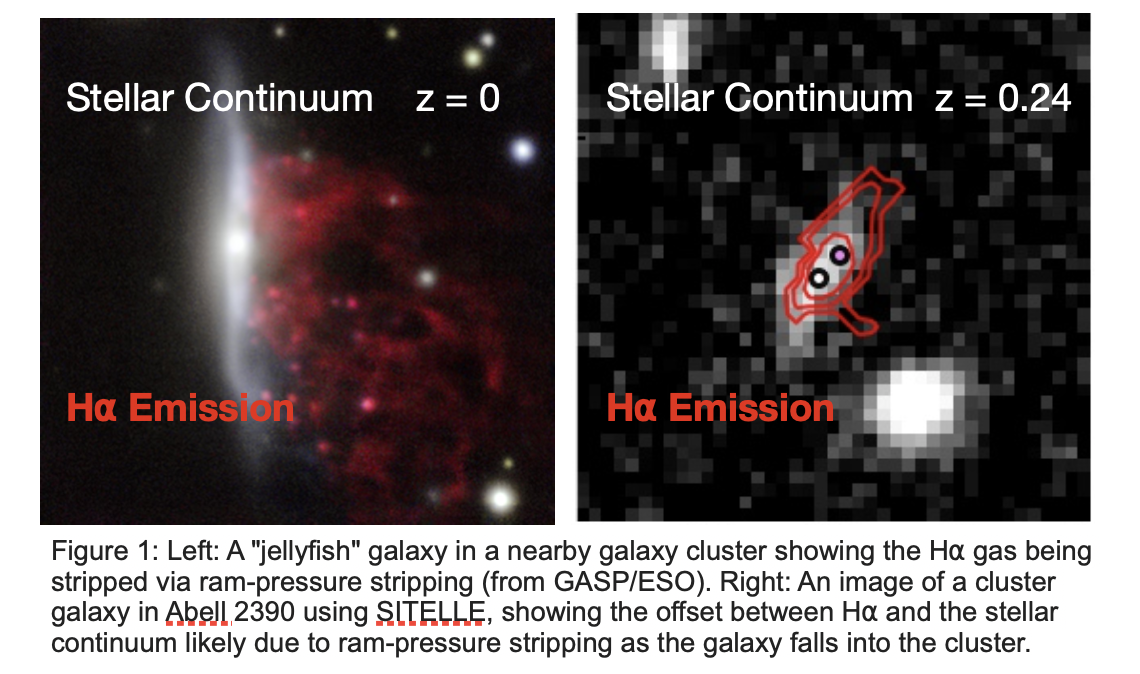
Young Supernovae and Peculiar Optical Transients
In this project, we plan to understand the origin and evolution of supernovae and peculiar optical transients detected by the Korean Microlensing Telescope Network (KMTNet). KMTNet is composed of three wide-field (= 4 square degrees) 1.6-m optical telescopes in Chile, South Africa, and Australia, providing unique 24-hour continuous sky coverage. This enables detection of transients from their infant (e.g., < 1 day from explosions) phases in three (= BVI) filters, often revealing natal information directly related to their origins and how they explode. Summer students will participate in diverse activities related to the proposed research, which includes data analyses, light curve modeling, depending on their background and interest. Additional research opportunities (e.g., discoveries of dwarf galaxies) based on the KMTNet data are also available.
The project will be supervised by Prof. Dae-Sik Moon, DADDAA.
The Dragonfly Telephoto Array and the Invisible Universe
The Dragonfly Telephoto Array (Dragonfly for short) is the world’s weirdest-looking telescope, and also the world’s most sensitive wide-field imaging telescope. It was built in New Mexico by a small team of professors and grad students from U of T and Yale, and it is operated remotely from those places. Dragonfly has made some amazing discoveries over the last few years, and you can check it out here: https://www.dragonflytelescope.org/ Team Dragonfly has recently obtained a big stack of money to modify the telescope to make it even more freaking awesome. Over the course of the summer we’re going to upgrading it from 48 lenses to 168 lenses and will be adding some narrow-band tuneable filters to the setup, which will make it the perfect machine for finding the Universe’s “”missing baryons””. We’re looking for a student who loves telescopes and/or loves robots and/or loves taking beautiful pictures of things in space to help us build this thing and test it out.
This project will be supervised by Prof. Roberto Abraham, DADDAA.
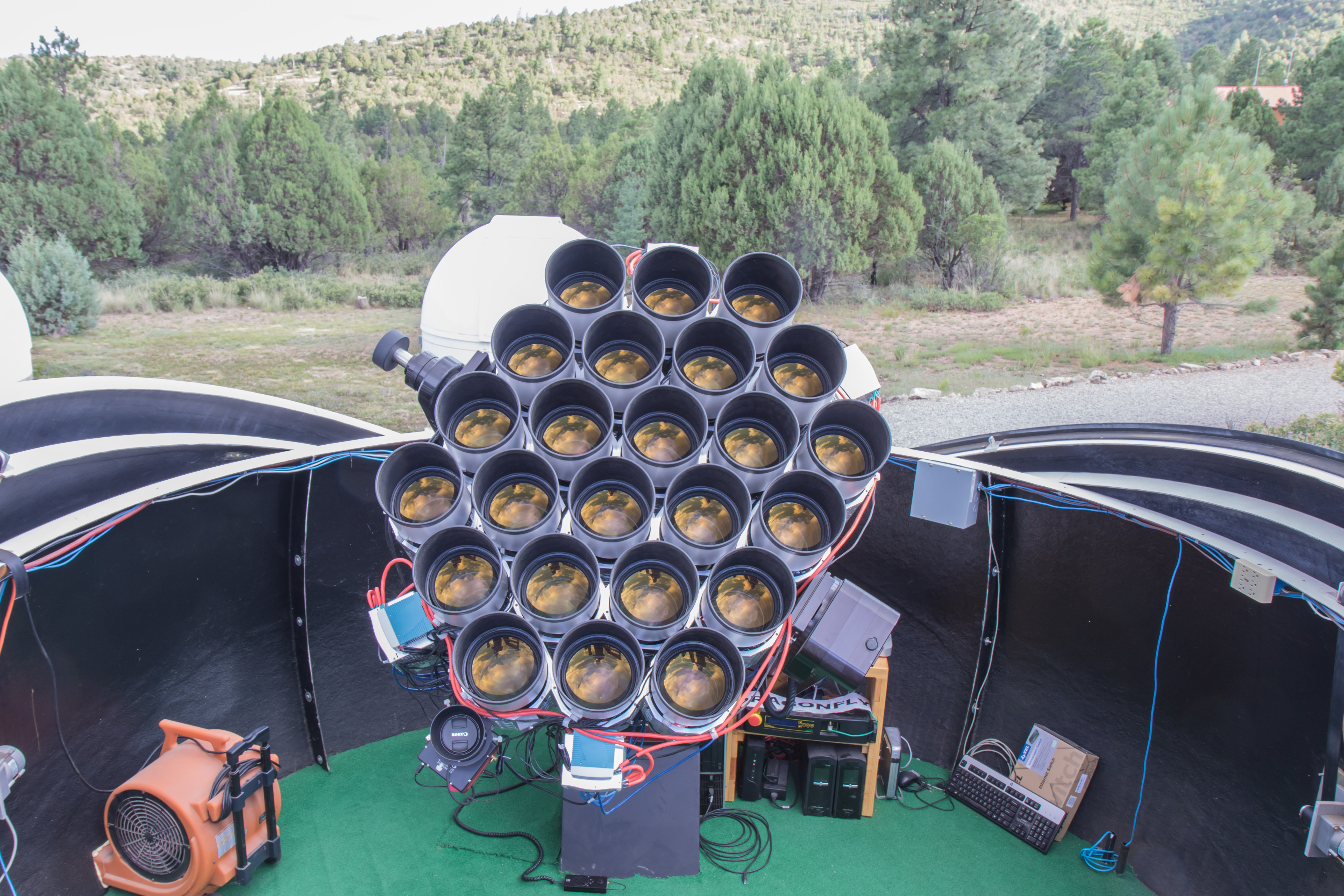
Constraining new physics with ACT and SO
The Atacama Cosmology Telescope has delivered pristine data that enable us to answer questions about what if there are large-scale anisotropies in the sky, whether or not there is variation in the fundamental constants. This project will use the ACT maps and forecasts of the Simons Observatory to test for physics beyond our standard picture. You will learn cosmology, data analysis with CMB maps and lots of statistics, and work within a larger group of cosmology enthusiasts in the Hnauts!
This project will be supervised by Prof. Renée Hložek, Dunlap Institute.
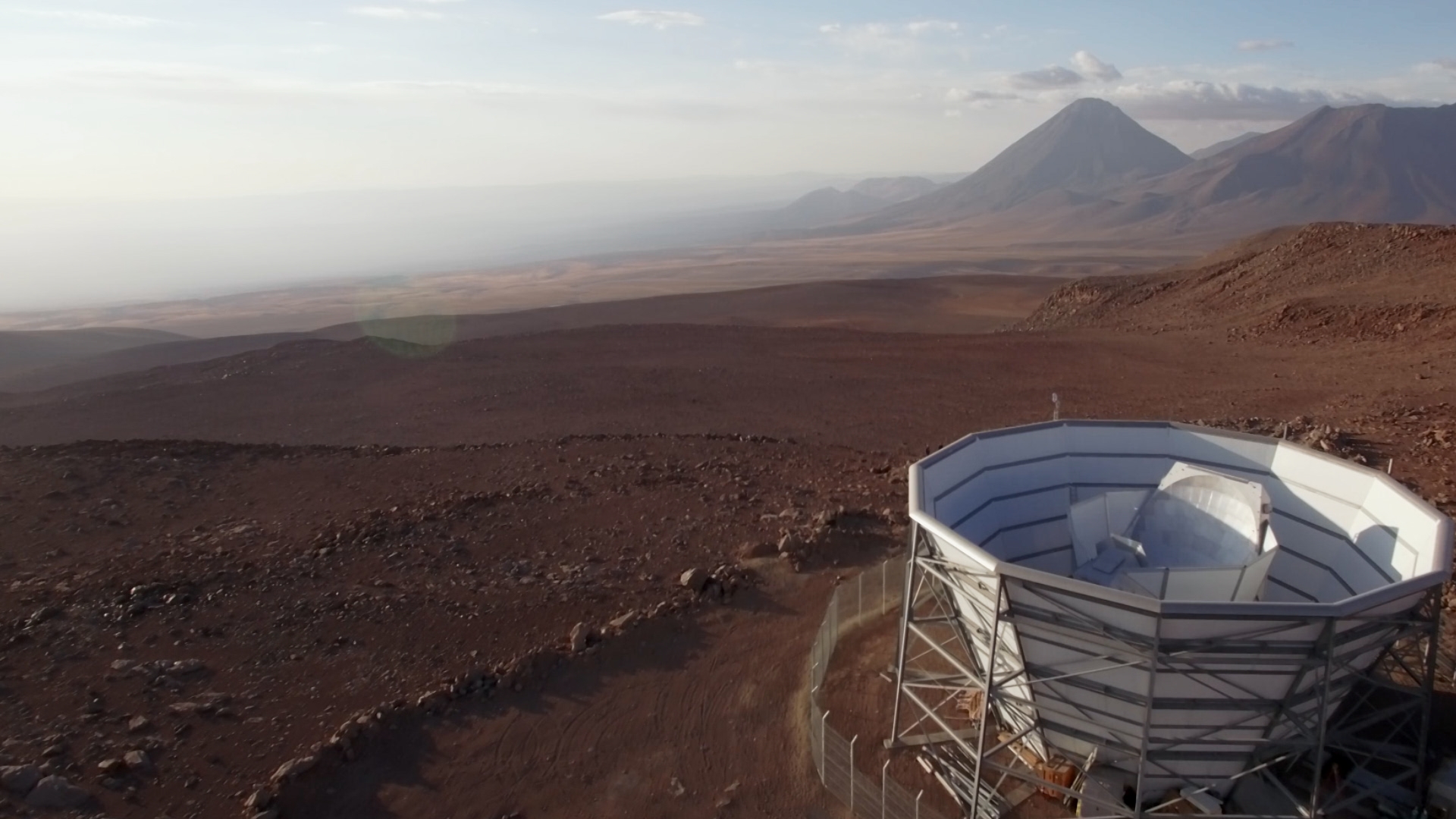
Examining the impact of high mass star formation on dense gas
Star formation occurs within dense clouds of molecular gas. In regions where high mass stars form, their luminosity, outflows, and stellar winds can have a strong impact on the surrounding cloud, which can then affect the continuing star formation activity nearby. In this project, the student will examine the properties of the young stellar cluster in the W40 region in the constellation Serpens, one of the closest sites of O and B star formation. The student will further investigate the temperature and kinematics of the dense gas that lies nearby the cluster, as observed in emission from the molecule NH3 (ammonia) via the Green Bank Ammonia Survey. With these data, we will determine the impact of the W40 stars on the gas temperature and turbulent motions, and consequently the ability of the dense gas to form new stars.
This project will be supervised by Prof. Rachel Friesen, DADDAA.
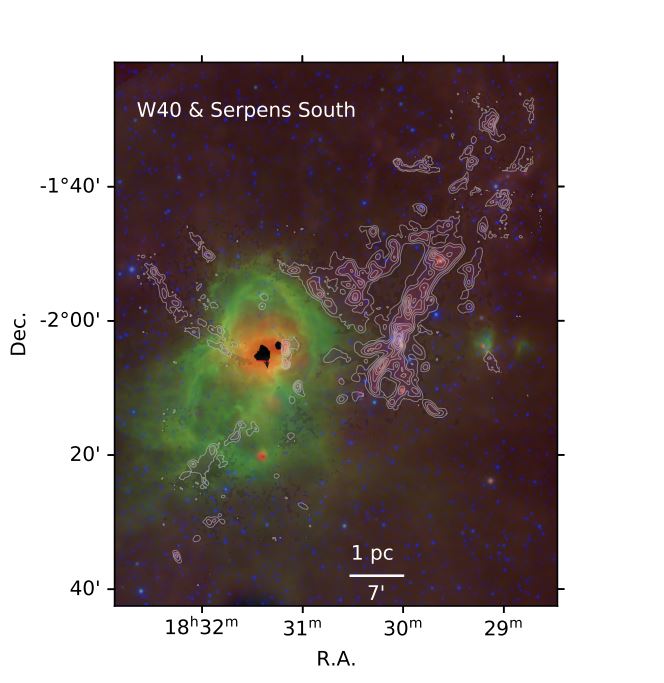
Exploring the Explosive Universe
This project will be supervised by Prof. Chris Matzner, DADDAA.
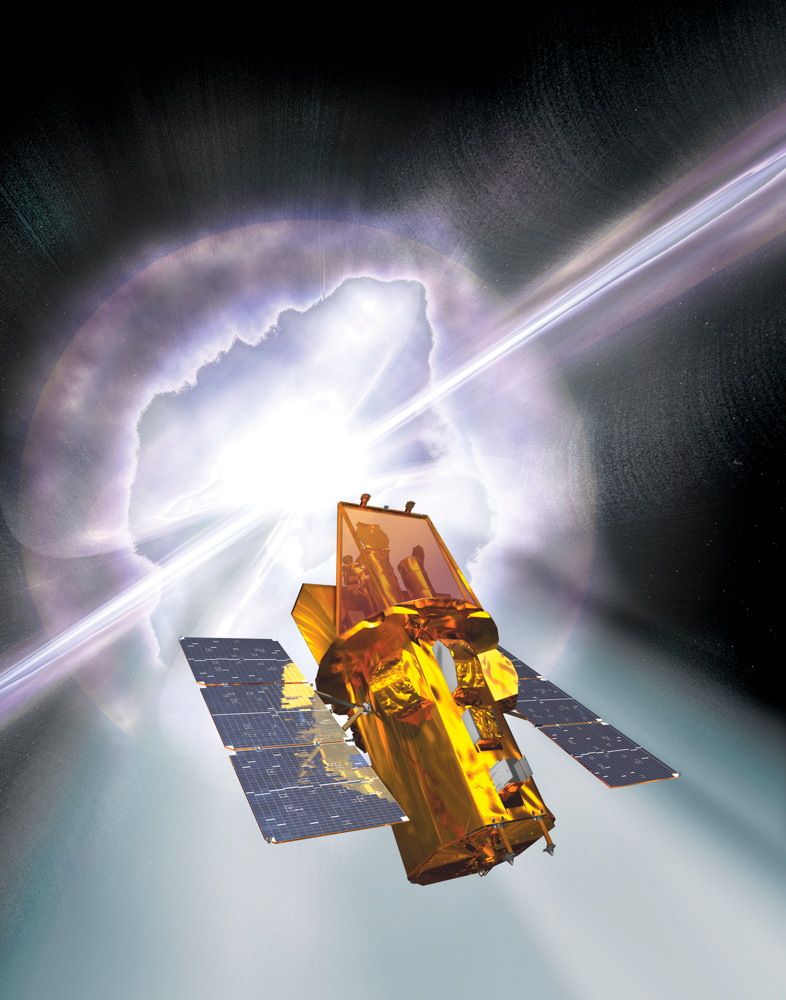
Detecting dark matter with streams of stars
Thin, dynamically-cold streams of stars orbiting the Milky Way are sensitive probes of small-scale structure that can perturb them. In particular, stellar streams are used to look for concentrations of dark matter called sub-halos. The detection of sub-halos and conclusions as to whether they ever formed tells us about the microphysical properties of dark matter like its mass and cross section. In this project, the student researcher will use N-body simulations of stellar streams in a realistic Galactic halo to determine what we can learn about dark matter physics from upcoming telescopes like the Vera C. Rubin Observatory. This is vital work that can inform how astronomers decide to survey the sky and the prospects for dark matter discovery. The project will involve coding in Python and the use of N-body simulation software, with the opportunity to connect results to our understanding of fundamental physics.
This project will be supervised by Keir Rogers, Dunlap Fellow, Prof. Ting Li, DADDAA, and Prof. Jeremy Webb, DADDAA.
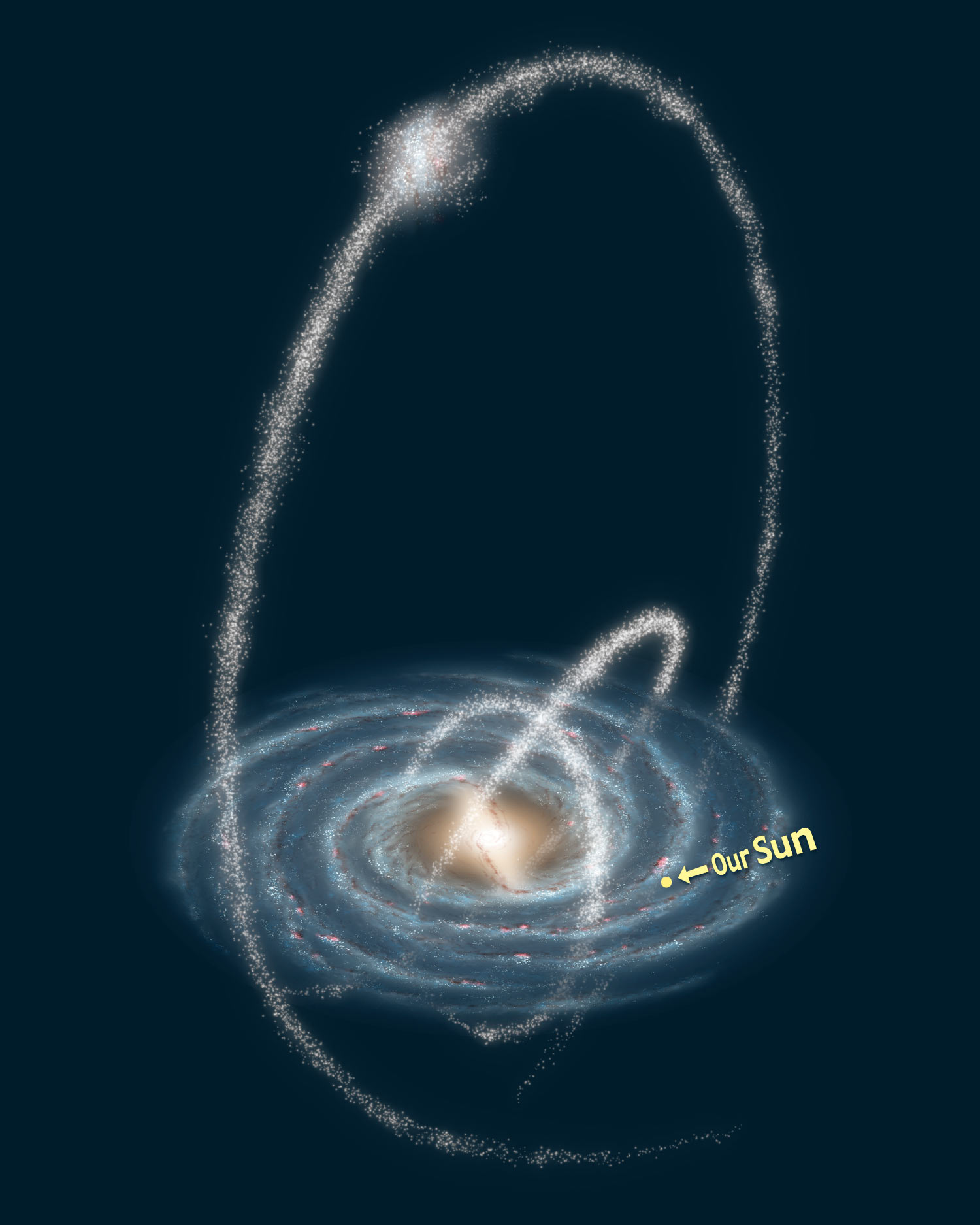
Time domain science with CMB data
The next-generation CMB experiments will produce a vast amount of data that will not only allow us to constrain cosmological models to unprecedented precision, but also open up opportunities for time domain science. For example, CMB dataset from the Atacama Cosmology Telescope has been used to search for moving objects in the solar system, such as the hypothetical planet 9, search for transient events, such as gamma ray burst afterglow, and study variability of active galactic nuclei. As the next generation CMB experiments will yield an order of magnitude more data, there will be more opportunities for time domain science. In this project we invite students to explore such possibilities with us and to think of interesting ways to use CMB datasets for time domain science. The project can be tailored based on the student’s interests and will likely involve coding in python and working with time stream data.
This project will be supervised by Yilun Guan, DADDAA , and Prof. Adam Hincks, DADDAA.
Planetary System Evolution in Star Clusters and Stellar Streams
Stars and planetary systems do not form in complete isolation, but in clustered environments within the gravitational field of a galaxy. In some cases, clustered star formation results in the birth of a collection of stars known as a star cluster. While the details of cluster formation remain uncertain, their evolution is strongly affected by gravitational interactions with their host galaxy as they dissolve into a stellar stream. Similarly, the evolution of planetary systems can be affected by interactions between planets, perturbations from nearby stars, and by the overall galaxy itself . Hence models for star formation, planetary systems, star clusters and stellar streams must account for gravitational interactions that span a wide dynamic range. For this project, students will learn how to simulate the evolution of planetary systems within star clusters orbiting in a Milky Way-like galaxy. Depending on student interests, we can use these simulations to reproduced observed planetary systems of interest or focus on explaining the orbital distribution of all confirmed exoplanets. Image Credit – Marios et al. 201
This project will be supervised by Prof. Jeremy Webb, DADDAA.
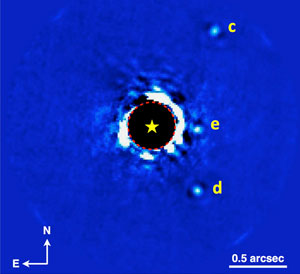
Probing the first billion years of the Universe’s history*
The Universe is not the same today as it was yesterday. It is now structured as a giant cosmic web, where galaxies are embedded and the intergalactic space is filled with ionised gas. However, it was once generally smooth and filled with neutral gas, which is predominantly hydrogen. The Universe must have undergone a major transition that transformed it from being structureless to structure-filled, and from being neutral to being almost completely ionised. This major transition concerns the first billion years of cosmic history. It is referred to as cosmological reionisation and forms a few key science projects of current and upcoming radio telescopes (e.g. HERA and SKA). In this project, student will learn how to probe the Universe’s first structure formation period and the reionisation epoch using the 21-cm line of neutral hydrogen. They will gain hands-on research experience simulating ionised bubbles and solving radiative transfer equation, hence, making theoretical predictions of the reionisation imprints on the redshifted 21-line radiation that we would observe today.
The project will be supervised by Jennifer Y. H. Chan, CITA and Faculty of Arts and Science Fellow.
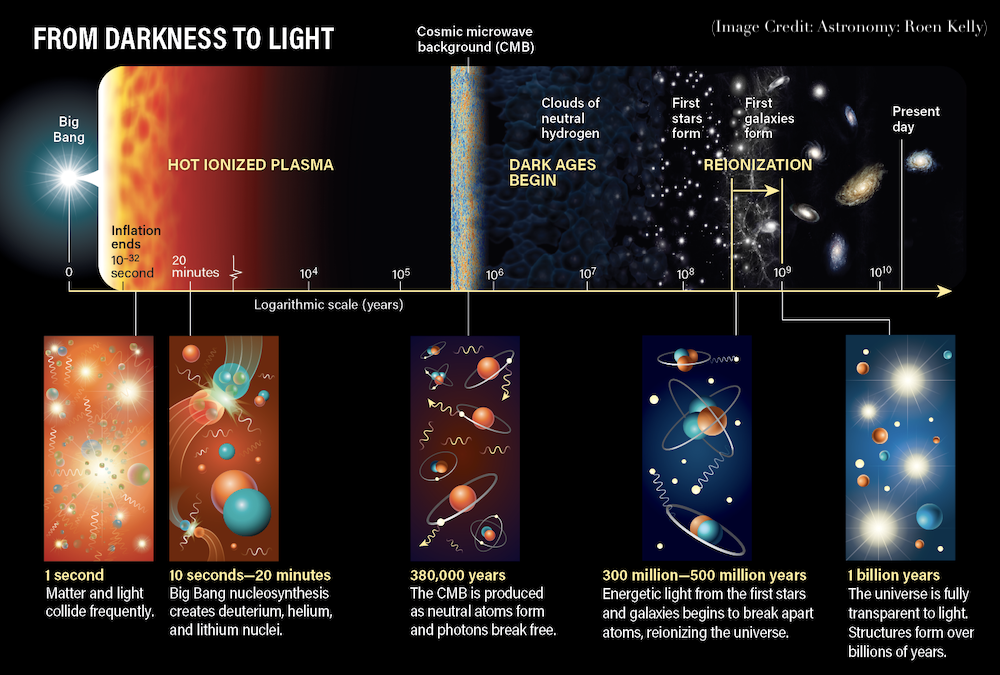
Construction of a stratospheric balloon borne telescope
The GigaBIT telescope is a balloon borne visible/near UV telescope under construction at the University of Toronto. It designed to exceed the imaging speed of the HST by a factor of 40, at similar resolution. The project will be to assist in the construction of the payload. There are a broad range of potential projects in areas including mechanical design, construction, machining, thermal engineering, electronics (design and construction), software (real-time and GUI), and astronomical simulation. The precise project will be chosen in line with the candidate’s skills and interest.
As examples, past undergraduate student projects have been:
– Design of a solar array.
– Evaluation of radiative properties for various thermal treatments
– A remote commanding app.
– Compression algorithms for astronomical images.
– A thermometry readout system.
The project will be supervised by Prof. Barth Netterfield, DADDAA.
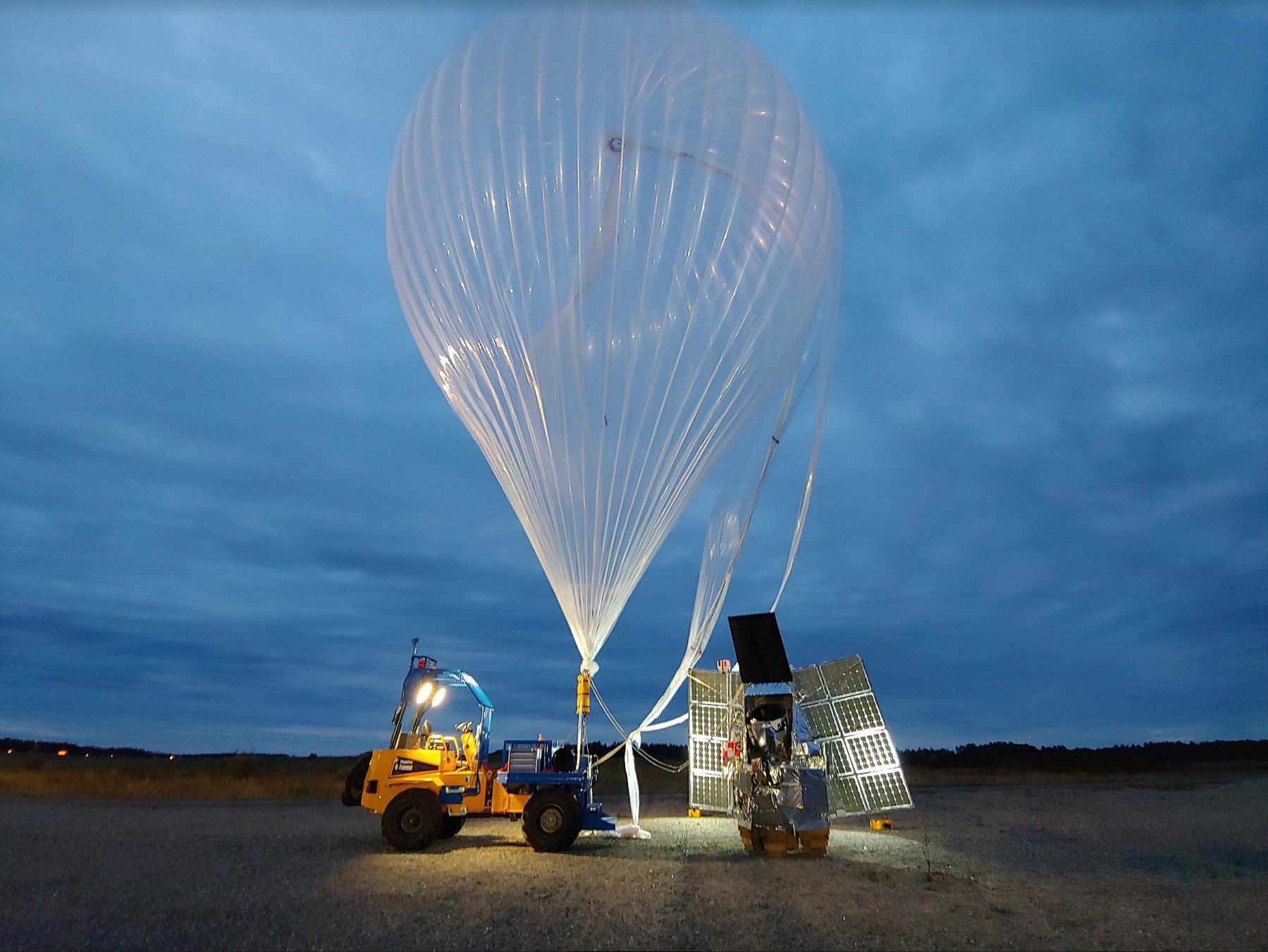
*These projects will also be posted in CITA’s SURF program this year.


